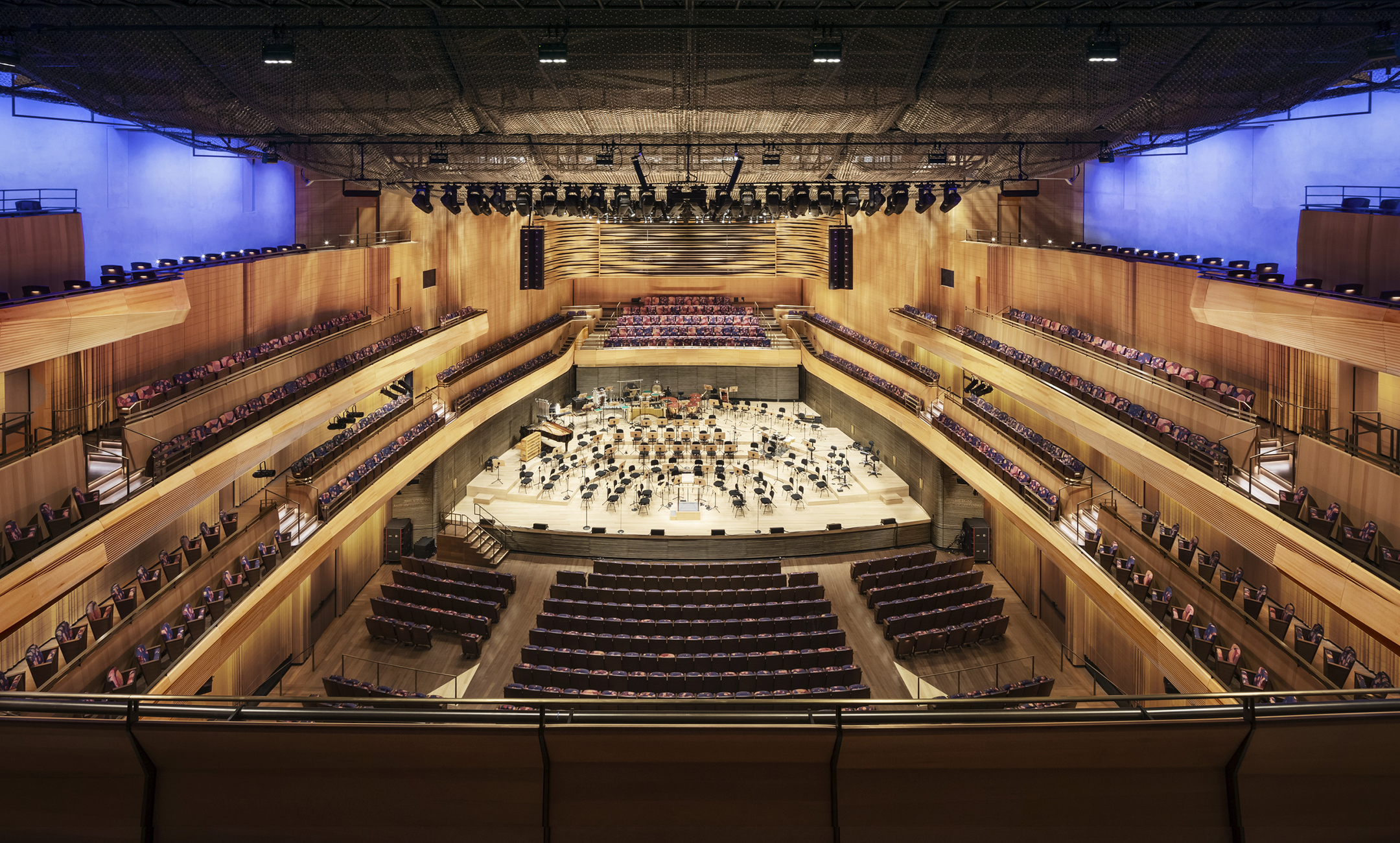LA Times: How two New York performance spaces are bringing us back together

For more information, please contact:
Andrea Chin, Communications Director
Email: achin@dsai.ca
Gary McCluskie, Principal
Email: gmccluskie@dsai.ca
David Geffen Hall is featured in an article by Carolina Miranda for the Los Angeles Times.
Two venues in New York City — the new Perelman Performing Arts Center in Lower Manhattan and the revamped David Geffen Hall at Lincoln Center — had me thinking about how design brings people together in performing arts spaces. Both the Geffen and the Perelman mark a move away from fixed proscenium arch stages, a form with roots in the Italian Renaissance that puts performers at a remove from the audience. Instead, both halls feature more flexible settings in which viewers can encircle or be immersed in the action.
“It’s the idea that we are together with the artist,” says architect Gary McCluskie of Diamond Schmitt, the firm that reimagined the auditorium at Geffen Hall. “As an audience, we are making this together. The thing doesn’t exist without the audience.”
Togetherness doesn’t necessarily come easily.
The $500-million Perelman, which opened its doors in September, was designed by Rex, the New York based studio founded by Joshua Ramus (a former partner at Rem Koolhaas’s OMA), and lobby and restaurant interiors were conceived by David Rockwell of the Rockwell Group. Serving as executive architect was Davis Brody Bond.
The most interesting parts of the Perelman, are the theaters: three of them laid out in an L, flexible spaces that can be configured into one theater or two or three with more than 60 different seating formats. Directors can arrange a proscenium stage, an open black box space or a theater in the round — along with every possible permutation in between. Mechanical walls can be lowered and raised, balconies can be shifted and the rake of the floor adjusted thanks to a mind-boggling mechanical apparatus below.
A sense of immediacy is likewise present in Lincoln Center’s renovated David Geffen Hall, completed late last year. The $550-million project was another that was a long time coming — back to 1962, when the building first opened and it became clear that the acoustics were terrible. A 1976 renovation by Johnson/Burgee — when the hall was renamed for Avery Fisher — improved the sound, but didn’t fix it.
In 2015, David Geffen donated $100 million in anticipation of another renovation. On this go-around, the firms tasked with hitting the reset button were Diamond Schmitt, the Toronto-based architectural firm behind the Maison Symphonique in Montreal, and Tod Williams Billie Tsien Architects (TWBTA), the New York City-based studio that is currently at work on the Obama Presidential Center in Chicago. Diamond Schmitt worked on the design of the auditorium and back-of-house spaces; TWBTA focused on public areas.
Ultimately, this building is all about its auditorium.
Diamond Schmitt essentially tore the insides out and started over. The room is now lighter and brighter, with walls sheathed in rippling beech wood and the stage clad in white oak. Like the Perelman, the stage is flexible — powered by 22 lifts that accommodate an array of performance types, including pop concerts, semi-staged operas and solo shows in addition to the regular orchestral concerts. Most significantly, the proscenium arch is gone. The stage has been brought forward and it is now surrounded on all sides by seating, inspired by the “vineyard-style” plans of venues like L.A.’s Walt Disney Concert Hall.
The seating has also been vastly improved: Balcony seats have been arranged at more comfortable angles and the architects have steepened the rake of the auditorium at orchestra level, allowing for improved sightlines.
David Geffen Hall feels far less stuffy than the Avery Fisher Hall of my memories. The bright blond wood begs for a comfortable sweater rather than a beaded gown. And the space is vastly more intimate.
Read the full Los Angeles Times' article here.